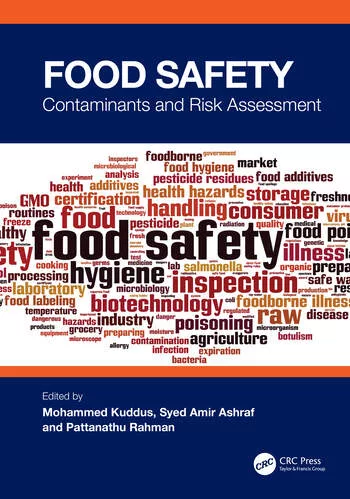One Overlooked PFAS in EU Drinking Water Causes Concern

Image credit: PIxabay via Pexels
Trifluoroacetic acid (TFA) is a highly pervasive type of per- and polyfluoroalkyl substance (PFAS) in European tap and bottled water, but little is known about its toxicity or the long-term human health consequences of exposure, according to a recent report from Pesticide Action Network Europe (PAN Europe). PAN Europe is calling on European regulators to take action, including setting an EU-wide safe drinking water limit for TFA.
Pesticides containing PFAS are thought to be the main cause of TFA water contamination in rural areas, followed by coolants/F-gases, sewage treatment, and industrial pollution. Despite TFA’s ubiquitous presence in European drinking water, toxicological data about the pollutant are sparse, creating difficulty when assessing the health risk it poses. Still, two recent studies on TFA’s toxicity show chronic health effects, including reproductive harm, that are similar to those associated with more studied PFAS—although, at much higher concentrations.
EU Legal Landscape of PFAS and TFA in Drinking Water
Regarding general PFAS regulation in the EU, beginning January 12, 2026, a limit for the combined total of PFAS in drinking water—specifically, 500 nanograms per liter (ng/L)—will come into effect. However, to the best of PAN Europe’s knowledge, discussions are still ongoing about whether TFA will actually be included in this mixed-PFAS drinking water limit.
The combined PFAS limit was set in 2020 as an amendment to the EU Drinking Water Directive (Regulation EU 2020/2184). Because there are more than 10,000 PFAS, for which sufficient toxicological data is only available for a small number, two group limit values were set: the 500 ng/L PFAS total, which applies to all PFAS, and the “sum of PFAS” total, which applies to a group of 20 important PFAS. EU Member States are allowed to choose not to enforce the PFAS total in their countries, and several states have already decided not to implement this value; specifically, Austria, the Czech Republic, Germany, Denmark, Spain, the Netherlands, and Hungary.
Revisions to the EU Water Framework Directive are underway and expected to be finalized in a trilogue by the end of 2024. PAN Europe underlines that this opens the opportunity to establish quality standards for TFA in natural water bodies.
Moreover, in lieu of EU guidance on the matter, the Dutch Institute for Public Health and the Environment (RIVM) proposed its own drinking water guideline for TFA of 2,200 ng/L, based on the available scientific literature on PFAS as a whole, and using relative potency factors for liver toxicity of perfluorooctanoic acid (PFOA). RIVM’s drinking water guideline is more conservative than older limits suggested for TFA.
Looking for quick answers on food safety topics?
Try Ask FSM, our new smart AI search tool.
Ask FSM →
Sample Collection and Results of Analysis
Samples were collected from April–June 2024 by PAN Europe member organizations in 11 countries: Austria, Belgium, Bulgaria, Croatia, France, Germany, Hungary, Luxembourg, the Netherlands, Spain, and Sweden. All tap and bottled water samples were individually analyzed for TFA. Additionally, four mixtures of samples were prepared (comprising equal parts of different tap or bottled samples from different countries) and analyzed for 24 other PFAS.
Overall, TFA was detected in 34 of 36 European tap water samples (94 percent), and in 12 of 19 bottled mineral and spring water samples (63 percent). TFA in tap samples ranged from undetectable (i.e., less than 20 ng/L) to 4,100 ng/L, with an average of 740 ng/L. For bottled mineral and spring water samples, TFA levels ranged from undetectable to 3,200 ng/L, with an average of 278 ng/L.
Analysis of the sample mixtures for 24 other PFAS confirmed that, outside of PFAS contamination hotspots, TFA is the most dominant PFAS in European drinking water, representing approximately 98 percent of PFAS present.
Legal and Public Health Implications
If TFA is to be included in the impending mixed-PFAS drinking water limit as proposed under the EU Drinking Water Directive, then billions of dollars will need to be invested into remediation, as half of the drinking water samples analyzed by PAN Europe exceed the 500 ng/L threshold.
TFA was detected below the RIVM threshold of 2,200 ng/L in 97 percent of samples, assuming that drinking water consumption fulfills only 20 percent of a person’s tolerable daily intake (TDI) for TFA. Despite the levels of TFA in the analyzed samples falling below the threshold of safety, PAN Europe cautions that, because so little is known about TFA toxicity, its danger to human health is possibly underestimated. Since many PFAS are considered non-threshold chemicals (meaning that a chemical has the potential of causing adverse effects unless the exposure level is zero), PAN Europe questions whether the same is true for TFA.
Additionally, PAN Europe notes than TFA pollution is increasing, and therefore the actual TFA contamination in water may be closing in on “safe” levels of contamination. PAN Europe calls for action to prevent further TFA contamination of drinking water and to protect public health, including:
- An immediate ban on pesticides containing PFAS, and on coolants/F-gases
- Implementation of PFAS restrictions according to the EU regulation on the Registration, Evaluation, Authorization, and Restriction of Chemicals (REACH)
- Setting a safe drinking water limit for TFA at the EU level and quality standards for TFA under the Water Framework Directive
- Requiring polluters to pay wherever it is necessary to remediate PFAS-polluted waters
- Supporting farmers in replacing the use of PFAS-containing pesticides with alternative crop protection options.









